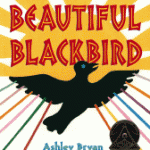 Graphic fiction and nonfiction books are increasingly being used in schools to hook reluctant readers or to present topics in a different format. The multimedia materials recommended in this month's column provide you with instructional support to integrate these graphic books into your lesson plans.
Graphic fiction and nonfiction books are increasingly being used in schools to hook reluctant readers or to present topics in a different format. The multimedia materials recommended in this month's column provide you with instructional support to integrate these graphic books into your lesson plans.Teaching with Graphic Novels
 Graphic fiction and nonfiction books are increasingly being used in schools to hook reluctant readers or to present topics in a different format. The multimedia materials recommended in this month's column provide you with instructional support to integrate these graphic books into your lesson plans.
Graphic fiction and nonfiction books are increasingly being used in schools to hook reluctant readers or to present topics in a different format. The multimedia materials recommended in this month's column provide you with instructional support to integrate these graphic books into your lesson plans.
 With the Internet at their fingertips, teachers will always have examples of quality writing to share with their students. Use the audio clips featured here to demonstrate the power of opening lines, to explore the use of dialogue, to understand an author’s purpose, and to enjoy wordplay. These multimedia resources are great reasons why educators should infuse technology into writing lessons.
With the Internet at their fingertips, teachers will always have examples of quality writing to share with their students. Use the audio clips featured here to demonstrate the power of opening lines, to explore the use of dialogue, to understand an author’s purpose, and to enjoy wordplay. These multimedia resources are great reasons why educators should infuse technology into writing lessons.
 As educators seek to merge reading and technology into content areas across the curriculum, the following collection of brief recordings will aid them in their search for quality, fine-arts multimedia materials.
As educators seek to merge reading and technology into content areas across the curriculum, the following collection of brief recordings will aid them in their search for quality, fine-arts multimedia materials. Engage students with technology as you explore best practices in writing. By integrating the online resource listed in this issue into your curriculum, students can have award-winning authors model the application of specific writing tips and techniques.
Engage students with technology as you explore best practices in writing. By integrating the online resource listed in this issue into your curriculum, students can have award-winning authors model the application of specific writing tips and techniques. High school offers numerous opportunities to integrate multimedia into literacy activities across content areas. In this month’s column, please find a sampling of ready-to-use materials that will enrich and stimulate conversations about books, support student research, and enable students and teachers to hear from writers and illustrators about their craft.
High school offers numerous opportunities to integrate multimedia into literacy activities across content areas. In this month’s column, please find a sampling of ready-to-use materials that will enrich and stimulate conversations about books, support student research, and enable students and teachers to hear from writers and illustrators about their craft. Forty years ago, two librarians and a publisher at the American Library Association conference lamented that no African-American author or illustrator had yet been honored with a Newbery or Caldecott medal. In response to that conversation, they decided to establish an award that would acknowledge the achievements of African-American writers and artists in the field of children’s literature.
Forty years ago, two librarians and a publisher at the American Library Association conference lamented that no African-American author or illustrator had yet been honored with a Newbery or Caldecott medal. In response to that conversation, they decided to establish an award that would acknowledge the achievements of African-American writers and artists in the field of children’s literature.